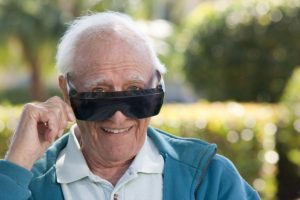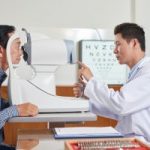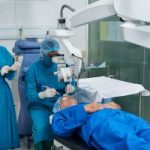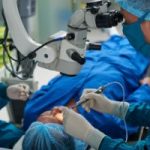 Cataracts are defined as a clouding of the lens of the eye that prevents the passage of light and occurs more commonly with advancing age. Your risk for developing cataracts increases each decade after 40. By age 75, half of white Americans will have cataracts. This number jumps to 70 percent by age 80.
Cataracts are defined as a clouding of the lens of the eye that prevents the passage of light and occurs more commonly with advancing age. Your risk for developing cataracts increases each decade after 40. By age 75, half of white Americans will have cataracts. This number jumps to 70 percent by age 80.
Because this treatable issue to so prevalent, we at Bel Marra have compiled a list of our best articles on the topic. You will find information on the types of cataracts, nuclear cataracts, cataract surgery, and issues regarding vision loss.
Age-related cataract types: Nuclear sclerotic, cortical, and posterior subcapsular
Advertisement
There are three main types of age-related cataracts: nuclear sclerotic, cortical, and posterior subcapsular. Cataract is the clouding of the natural intraocular crystalline lens which focuses on light entering the eyes through the retina. Cloudiness can reduce visibility and over time can contribute to blindness if left untreated.
Cataracts develop gradually and are often symptomless, so a person’s daily living will not necessarily be affected in the beginning. Cataracts are the number one leading cause of preventable blindness. Continue reading…
 Nuclear cataracts: Causes, symptoms, and treatment
Nuclear cataracts: Causes, symptoms, and treatment
Nuclear sclerotic cataracts are a normal part of aging, to some degree. This condition minimally interferes with vision. In nuclear cataracts, an excessive amount of light scatters, leading to a central opacity (cloudy area).
Nuclear cataract progresses slowly and can lead to greater impairment of distance vision, although close-up vision may improve. In its early stages, nuclear cataracts can result in hardening of the lens. As it progresses further, yellowing and browning of the lens occur, causing hue discrimination, in particular with the blue end of the visual spectrum. Continue reading…
 Cataract surgery: Complications and recovery in elderly
Cataract surgery: Complications and recovery in elderly
Cataract surgery is a common procedure for treating cataracts. Recovery from cataract surgery is pretty smooth and uneventful, as long as you are healthy. Statistics reveal a high success rate of healthy vision post-surgery.
For most people, cataracts develop slowly and don’t disrupt the vision early on. But with time and age, this will interfere with your daily life and you’ll need eyeglasses. You may need surgery down the road, generally, a safe and effective procedure. But still…the question is, how to slow down cataracts? Are there any natural remedies for cataracts? Is there a natural way to cure cataract even? Continue reading…
 Cataract surgery: Tips to a speedy and safe recovery
Cataract surgery: Tips to a speedy and safe recovery
Cataract surgery is a common procedure for treating cataracts. Recovery from cataract surgery is pretty smooth and uneventful, as long as you are healthy. Statistics reveal a high success rate of healthy vision post-surgery.
Advertisement
Normal timeframe for uncomplicated cataract surgery is around 10 minutes, but you will have to remain in a recovery area after surgery as you will be under sedation and feeling groggy. The post-surgery recovery time can range from 30 minutes to an hour before you can go home. Continue reading…
 Vision loss in seniors after cataract surgery may be prevented with new eye pressure test
Vision loss in seniors after cataract surgery may be prevented with new eye pressure test
Vision loss in seniors after cataract surgery may be prevented with new eye pressure test. Cataracts are a common condition associated with aging, and nearly half of seniors over the age of 75 will develop cataracts.
Lead researcher of the study John Jarstad explained, “The current standard of care following cataract surgery is to refill the eye with a saline solution and tap on the eye with a Q-tip to observe if it is too firm, too soft, or just right. This Goldilocks-style guesstimate often is inaccurate, and patients might actually have higher eye fluid pressure than the surgeon believes. Here at MU Health Care, we use a device known as a tonometer to accurately gauge eye pressure.” Continue reading…
